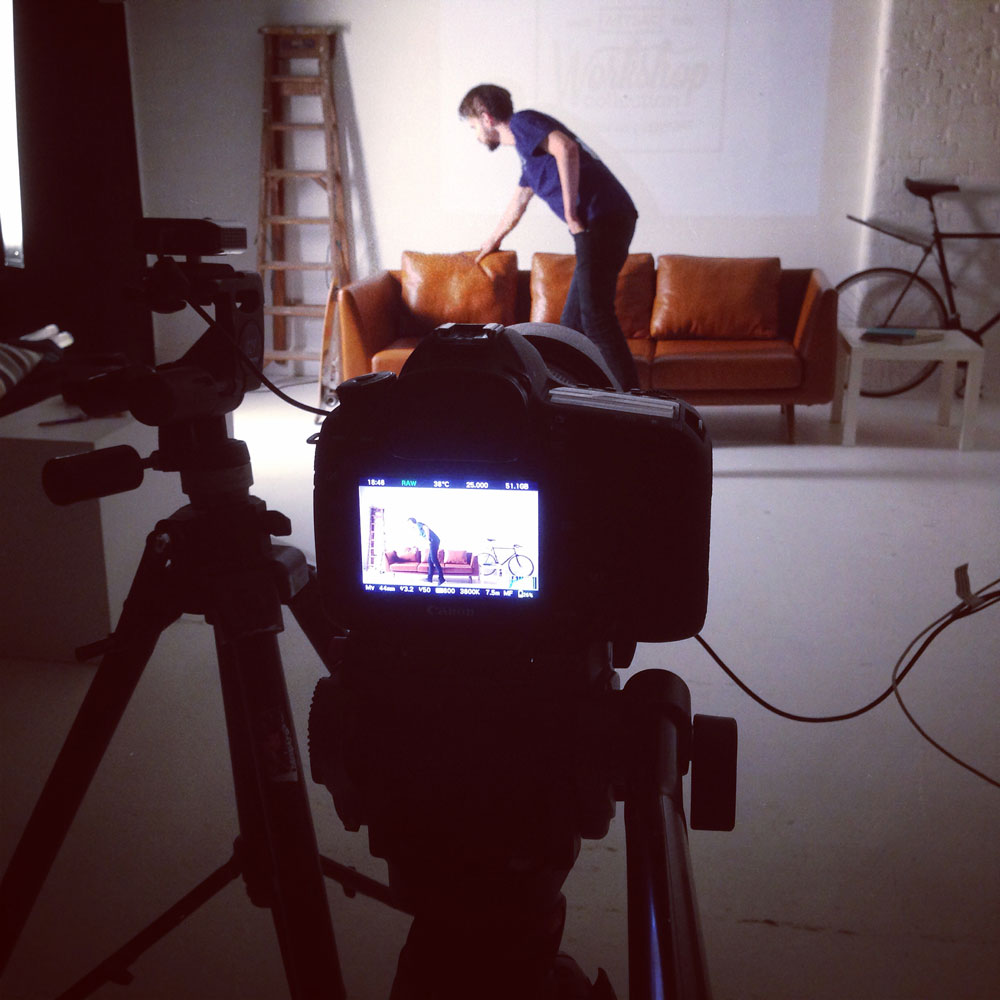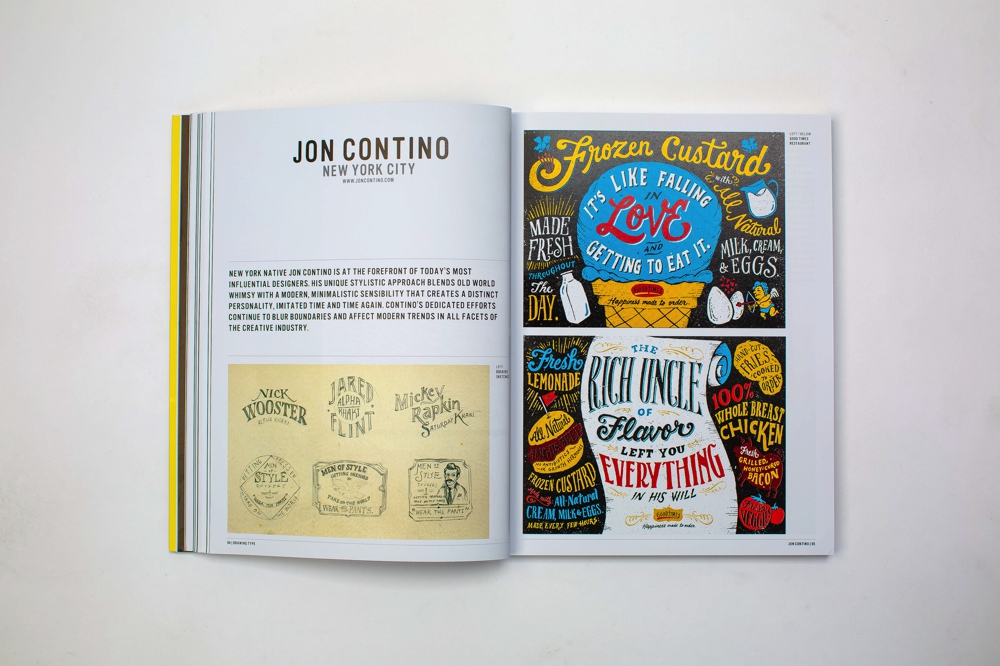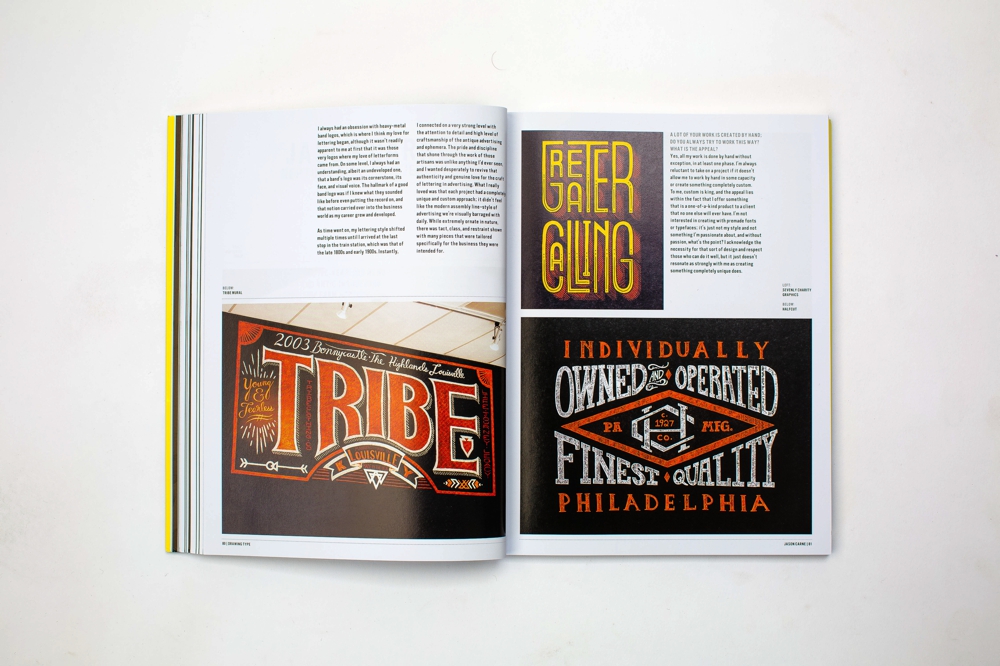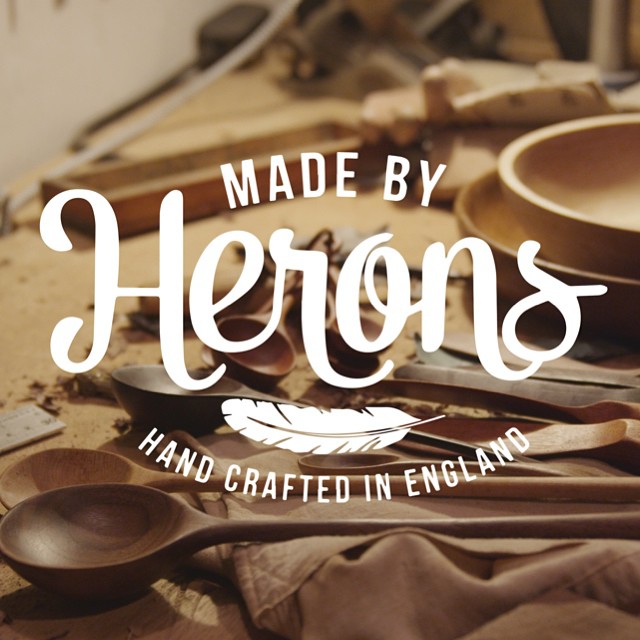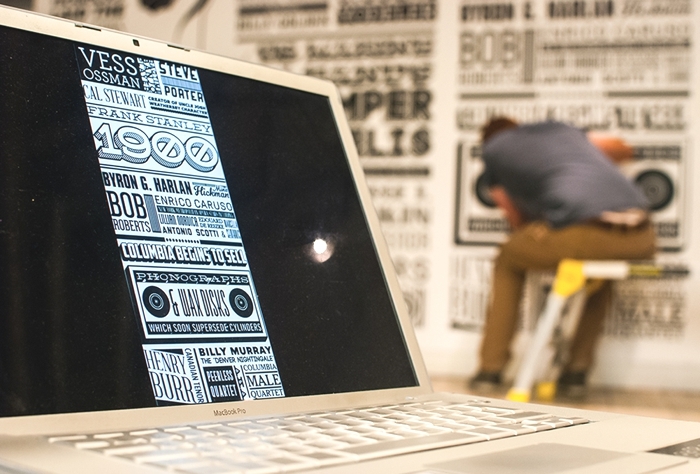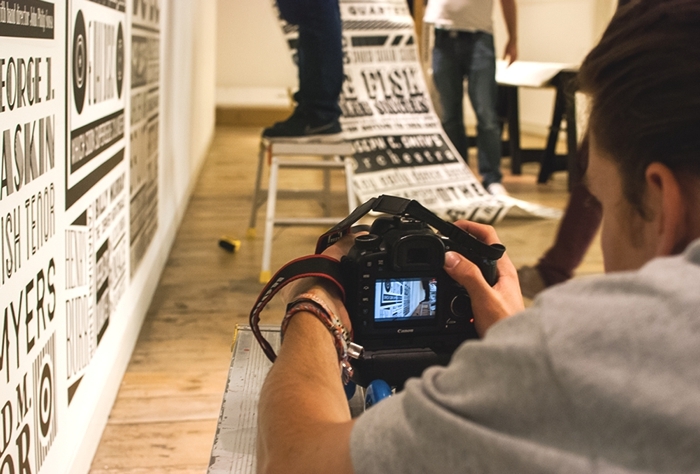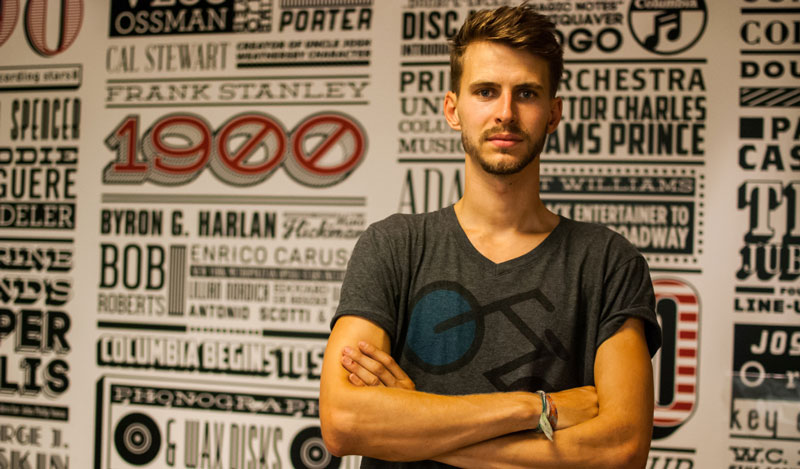My Tablet & Me: Alex Fowkes
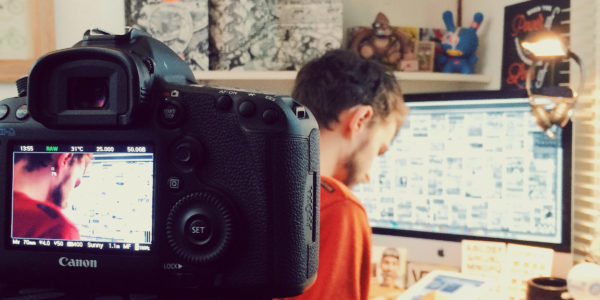
Graduating from Nottingham Trent University in 2010 with a first class honors degree in Graphic Design, Alex Fowkes is a freelance graphic designer.
Having worked for a number of high profile clients including Sony Music, Empire and the O2, he has developed a niche for bold typographic murals and installations.
As part of our new My Tablet and Me collaboration with Argos, we’re delighted to present our first interview with Alex; exploring his working practice and taking an in-depth look at his creative process which has seen him transform offices, retail spaces, music venues – even the odd celebrity residence here and there!
Join us as we discover just how Alex has utilised the Samsung Galaxy 3 tablet from Argos to improve his work flow and productivity on the move – with great results.
Tell us a little more about your career to date and the type of work you do?
I try to approach my work with a freestyle and evolving attitude, and enjoy responding to an environment on the spot allowing for the uncontrollable elements to help influence my ideas. I’ve had my work included in advertising campaigns throughout London’s Underground network, across 10 nationwide O2 academy venues including The O2, several projects for Urban Outfitters throughout Europe – and of course the Sony Music Timeline which started it all. Earlier this year I also published my first book with Rockport titled ‘Drawing Type.’ I also lecture on the Graphic Design BA at Nottingham Trent University – it’s safe to say my work life is pretty varied and I like it that way.
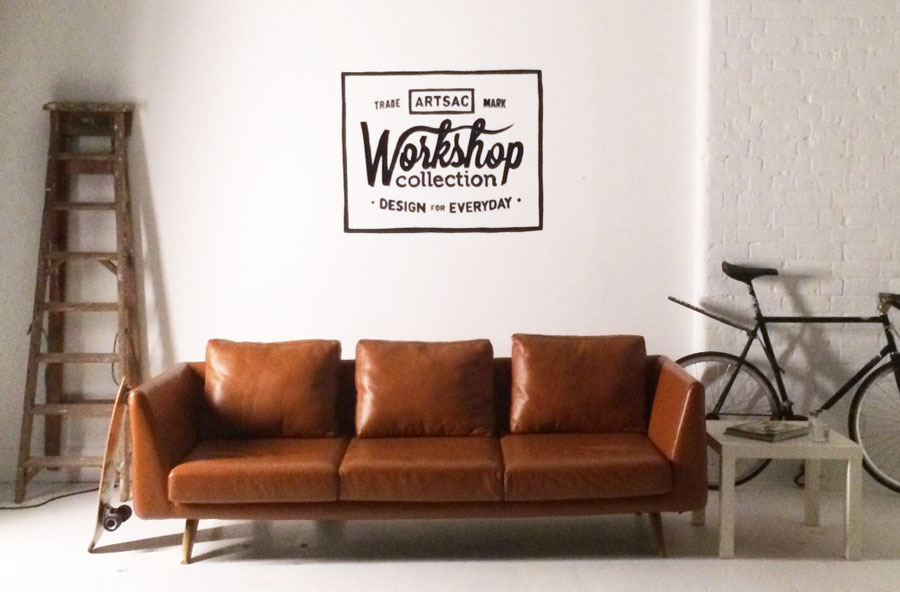
What steps did you take to become a designer and make it into a full time career?
I’ve always been a very proactive person in both my working and personal life – choosing to get involved with anything and everything from helping curate art exhibitions to creating products and clothing. I’ve always enjoyed learning new things and applying myself to fresh perspectives, so studying Graphic Design at Nottingham Trent felt like a natural step. In many ways I think I was always destined to take the self-employed route – I started working for a few studios after my time at Uni before the opportunity of a lifetime dropped in to my inbox [The Sony Music Timeline – see below] – a spring board that gave me an incredible opportunity, whilst thrusting me in the spotlight and (more importantly) gave me exposure to the world of clients and brands. Having a client like Sony behind me added to my credibility and set me off on a great path towards the career I have today.
How do you manage your life outside of the studio to make the most of your time in the studio?
This is very much something I’m still trying to work out the best solution for. My weekly life is very varied, I don’t really have a typical week or typical day – I could be flying to Europe for a job, helping out on location shooting a video, creating artwork in my studio, drawing live at an exhibition or an event, or fitting one of my type installations. Being mobile and flexible is paramount.
Believe it or not my favourite place to work is actually on a train – I find the rhythm of travel helps me concentrate on the task in hand.
Many designers rely on hand held devices to stay connected on the move – can you tell us how the Samsung tablet specifically has improved your workflow & productivity? Are there any distinct advantages over using a smart phone?
Tasks like organising e-mail, writing project briefs in word, invoicing and organising daily tasks with Clear have all supported my workflow in ways I hadn’t anticipated. I have also been using the tablet in client presentations – it’s been really useful to meet with clients and have everything within arms reach on a lightweight compact device with a big screen to showcase my ideas and work in progress.
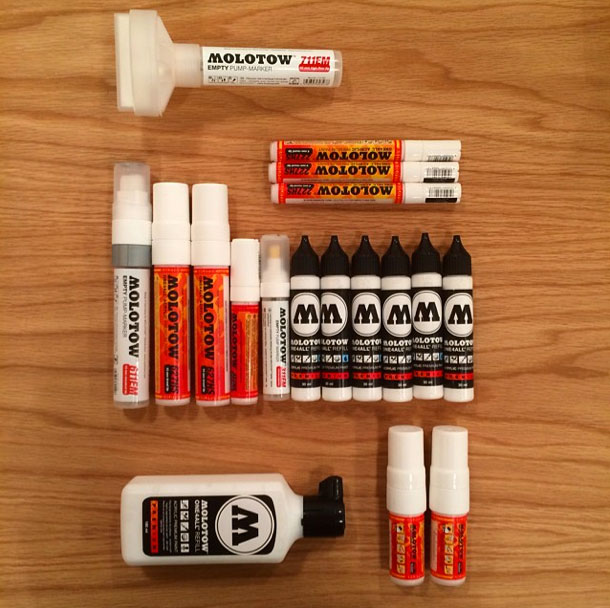
Portability is really important for me, and I have found the tablet a lot easier to use than my phone in terms of sorting through e-mails and projects – attachments download faster, briefs are easier to type up and organising my diary and calendar reminders has been key. I struggle to store it all in my brain! For bigger meetings I have also been linking the tablet up to my mini projector, that way I can project nice big images on to a wall and really give a bigger group a more inclusive and impressive presentation.


The great thing about the tablet for me is the portability and instant access, so rather than having to carry my laptop around to do some tasks I can do these with the tablet while I’m sat in the coffee shop or the park.

Alex Fowkes for Urban Outfitters, Munich
What role has social media played in your career success to date? Do you engage with an online audience daily?
Getting my work featured on blogs has been more significant than social media – I don’t often post directly to Facebook for example, though the fact that my work is often shared on social media definitely catches the attention of clients. From a peer point of view Instagram and Twitter are my favoured tools, and ones I use to find out what other designers are up to and interact with other creatives, as well as show my work. For me every social media outlet has a different role, for instance I only use Facebook to keep up with friends/family and people I have met face to face. Once of the things I discovered about having the Samsung tablet was the ease at which I could tap into social media and be more active – for example, blogging is often an activity I reserve for my laptop or iMac, so it was handy for me have access to wordpress and create blog posts on my tablet – something which is not readily accessible on my iPhone.

Alex Fowkes for Sony Music Timeline, 2012

Alex Fowkes for Sony Music Timeline, 2012
When did you first start working with lettering and making your own type design?
I didn’t really start playing around with typography properly till my 3rd year at Uni, I always thought I would go down the illustration route. I distinctly remember being told [by a lecturer] that my type needed to be considered more and often came secondary, so I decided to create some projects for myself that were just about type. From there I applied my illustrative and freestyle approach, and my style and approach has since really grown. I don’t class myself as a letterer I just enjoy working with type in many different ways and applications.
Travel makes me very productive; I find it easier to concentrate on trains or at airports and it’s surprising how I have become so used to working amongst that chaos.
Do you have a time of day when you’re most productive?
Travel makes me very productive; I find it easier to concentrate on trains or at airports and it’s surprising how I have become so used to working amongst that chaos. I often find myself collecting ideas and inspiration whilst I’m on the road, taking photos or screen shots of things I’ve seen online. Sometimes I find the internet over saturated and I can look for days and days and not actually feel inspired, so I get excited about discovering new things – I’d rather take inspiration from one real object than 100 images from blogs.
How did you land the Sony Music job? Can you briefly talk us through the creative process behind the project?
Right place, right time in many ways. A Creative Director at Sony had seen my work at a student show in London, and to cut a long story short we kept in contact on twitter after we met. Two years down the line and the same guy kindly put me forward for the Sony job – I was invited to pitch, and subsequently won the job. I had to quit my full time job at a studio in London to go solo, and six months later the project was complete and released to the world. The creative process was heavily weighted at the beginning with all the planning and logistical side worked out, so once I had proposed my idea and how I wanted it to be executed that was it – the rest of the time was just man-hours getting the design finished, which I managed to do on my trusty old 2009 15inch Macbook Pro!

How long does it take for you to complete one of your large scale type installations?
It varies by client, the space, the content etc. Some of my more recent work with Urban Outfitters for example was designed and produced on site, and a project like this will take me around 5/6 days to complete. The Sony Timeline was an intensive process from start to finish and took around 6 months. I’ve just finished a huge project with O2 Academies covering ten venues around the U.K. Design time was about 8 weeks for that, but the job itself was spread across the agency with me being at the helm as the sole designer. It was brilliant because I didn’t have to organise anything apart from creating the design. I think if I had to handle a project on that scale by myself it would have taken a hell of a lot longer. No two jobs are the same – I approach each one differently.
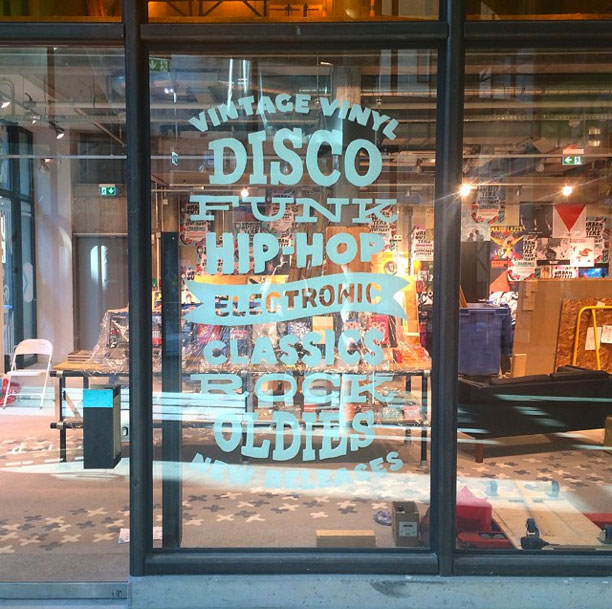
What advice can you give to designers who want to break into lettering / typography?
I enjoy playing with type, and a lot of my work is computer based so I don’t really class myself as a traditional letterer. Drawing is simply a tool that I can use if I feel its appropriate. My advice is to play around as much as possible; half the battle is just about forcing yourself to start without getting too hung up on the final outcome – being creative is all about process, experimentation and taking a journey – you’ve just got to get on board! Drawing Type – a book I published with Rockport Publishers earlier this year is also worth checking out.

Drawing Type: An Introduction to Illustrating Letterforms by Alex Fowkes, published by Rockport Publishers
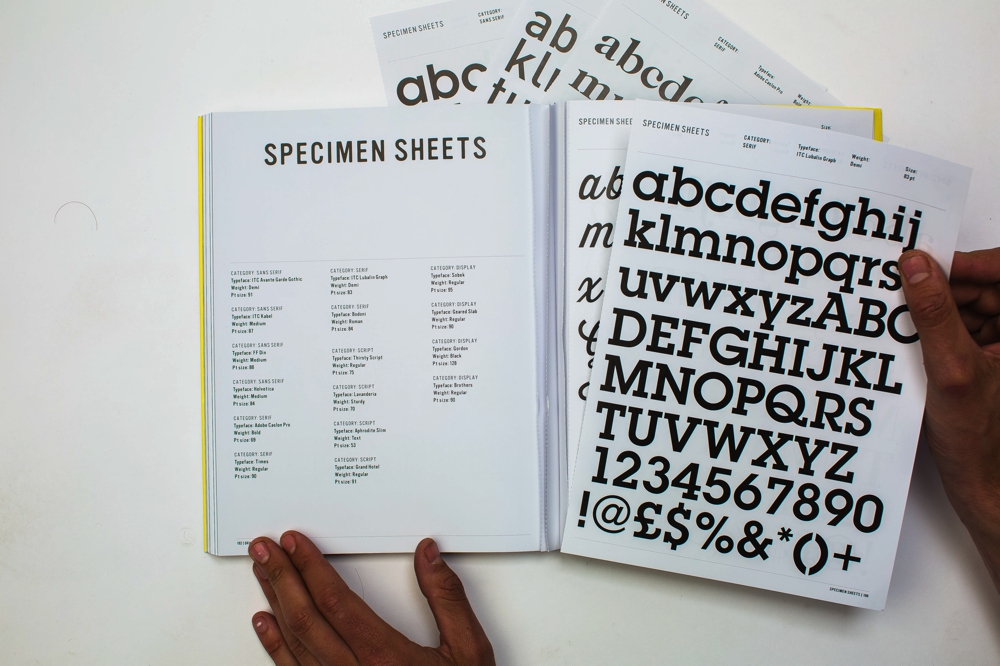
Play around, recreate a piece of work you like, try and figure out how it was done and experiment to get your creativity flowing.
For someone relatively young you’ve achieved a lot in your career already – where would you like to take your work in the next 3-5 years?
I feel so fortunate to be in this industry where travel is required and I want to take full advantage of it, so most of all what I want to do is more travel based jobs as I love getting out on the road and meeting new people. Taking some time out to travel in my van and see what other opportunities and influences are out there for me to grab hold of and just experiencing the world and my work would be brilliant. Once I’ve got that out my system I think I’d like to try and set up a more concrete studio (wherever that may be), begin to employ people and settle into a life of work and most importantly play.
We’re excited to present My Tablet & Me – essential reading for illustrators and creatives looking for tips on how to improve their productivity! Follow us on twitter to hear about each editorial as they’re published, and keep track of the action with our hashtag #MyTabletandMe. Our mini-documentary to accompany the project is currently being filmed with Nottingham production company Dimension 2 and is set for early 2015 release.
Alex used the following tablet:
- Samsung Galaxy Tab 3 10.1 Inch WiFi Tablet 16GB – £179 – available at Argos




